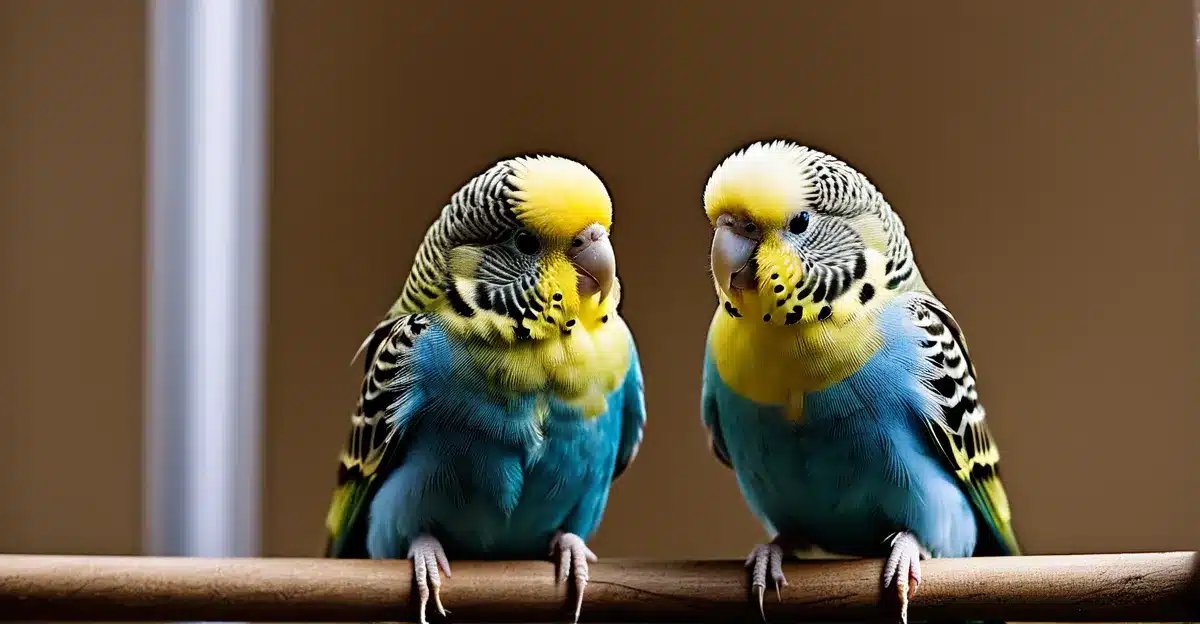Physical indicators of a healthy and happy budgie
A healthy budgie reveals itself through several clear and reliable budgie health indicators. First, their eyes should be bright and clear, reflecting an alert and engaged bird. Dull or watery eyes can signal discomfort or illness, so monitoring eye quality is crucial.
Next, the bird’s feathers serve as a strong measure of well-being. Smooth, vibrant feathers with clean plumage not only protect the budgie but also indicate good nutrition and proper grooming habits. A budgie struggling with feather issues might be stressed, sick, or suffering from improper care.
Also read : What should you feed a pet iguana for optimal health?
Additionally, observe a budgie’s active movements and strong perching stance. Healthy budgies show lively activity, demonstrating curiosity and energetic behavior. Their feet and claws should grip firmly, supporting their balance and readiness to move. Lethargy or weak posture can hint at fatigue or underlying health problems.
By understanding these physical signs of a happy budgie, owners can quickly spot concerns and take prompt action. Paying attention to such healthy budgie signs ensures a long, joyful life for your feathered friend and enhances the bond between bird and caretaker.
Also read : How Many Different Types of Domesticated Pets Exist Worldwide?
Behavioral traits of budgie happiness and contentment
A happy budgie displays distinct behavioral traits indicating contentment and well-being. One of the most noticeable signs is increased budgie activity, particularly playful exploration. Budgies that are curious about their environment often engage with toys, explore cage corners, or investigate new objects. This playful activity shows they feel safe and stimulated.
Vocalizations are another key indicator. A vocal budgie will frequently chirp, sing, or mimic sounds cheerfully. These sounds aren’t random but reflect positive emotions and a desire to communicate. When budgies sing or chirp rhythmically, it often signals they’re comfortable and happy.
Social behavior is crucial for budgie happiness. A social budgie will readily interact with humans or other birds, showing trust and friendliness. This interaction includes head bobbing, preening, or gently nuzzling. Such behaviors demonstrate their willingness to bond and feel secure in their surroundings.
Combining these signs—curiosity, vocal engagement, and social interaction—provides a reliable picture of a happy budgie. Observing these behavioral traits regularly empowers owners to support their bird’s emotional and physical well-being effectively.
Daily routines to observe in healthy budgies
A healthy budgie’s daily routine is centered around consistent habits that indicate well-being. One of the most critical signs is a stable budgie diet. Your budgie should eat and drink regularly, showing interest in its food and fresh water. Sudden changes in appetite or refusal to eat might signal health issues, so observing these patterns daily is essential.
Another vital indicator of health is budgie preening. Budgies engage in frequent grooming to maintain feather condition and cleanliness. Regular preening means your budgie feels secure and is in good health. Neglecting preening or an unkempt appearance might suggest stress or illness.
Finally, watch for active participation in social and playtime routines. A budgie that interacts, chirps, and plays shows normal behavior. These observing budgie habits help you detect subtle changes over time. Budgies isolated from social interactions could develop behavioral or health problems, so engaging your budgie daily fosters both physical activity and mental stimulation.
In sum, daily care involves monitoring eating habits, grooming routines, and social behaviors closely. These routines are practical markers that any budgie owner can use to track their pet’s well-being effectively.
Negative signs to watch for and when to seek help
Recognizing unhealthy budgie signs early is crucial for their well-being. If your budgie shows lethargy, becomes unusually quiet, or consistently has fluffed-up feathers, these are common warning signs budgie owners should not ignore. These symptoms often indicate discomfort or illness.
Loss of appetite is another important red flag. Budgies eating less or refusing food may be fighting an internal issue, especially when combined with abnormal droppings in color, consistency, or frequency. Such changes strongly suggest your bird needs attention.
Observe your budgie’s posture and breathing closely. Any shifts — like difficulty perching, labored breathing, or an altered stance — can signify respiratory or muscular problems. These signs of possible budgie illness should prompt a timely visit to a veterinarian experienced in avian care.
Prompt vet care for budgies is essential at the first sign of persistent symptoms. Waiting may allow the condition to worsen, making treatment more challenging. A vet can accurately diagnose issues and advise the best course of action to return your budgie to health. Regular monitoring paired with quick response to these warning signs helps ensure your pet stays happy and strong.





